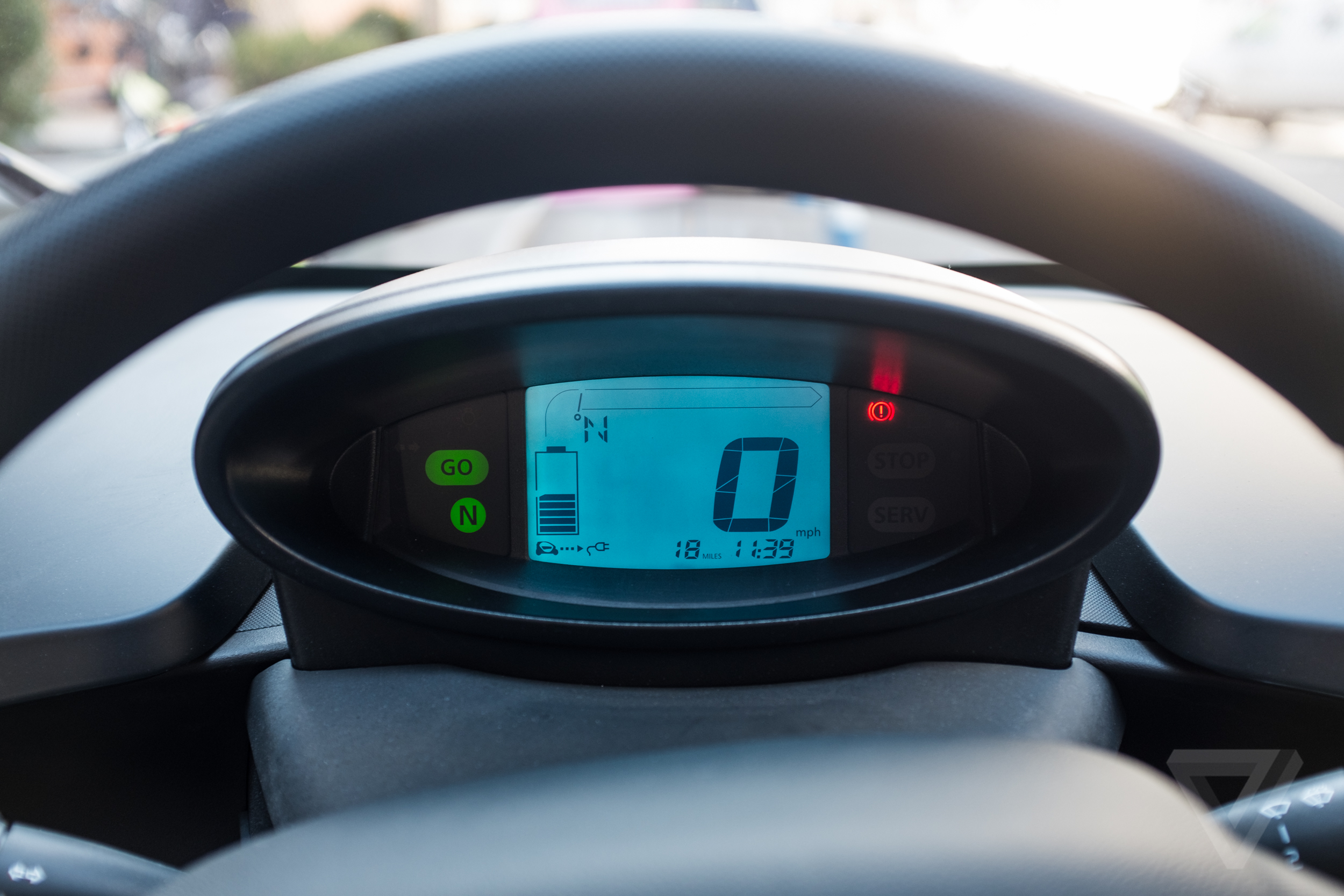The future of transportation is a tough thing to peg down. It could involve Hyperloops, or self-driving cars, or some strange mix of both. Two years ago, Nissan started up an experimental wing called "Future Lab" to address this shifting landscape. And the first project is the Nissan New Mobility Concept — a squat, four-wheel electric vehicle that Nissan has taken from Renault and modified for the United States.
Aside from different plugs, and a slower top speed of 25 miles per hour, it's essentially the same thing as the original Renault Twizy. The doors swing open like they would on a Lamborghini, which is cool, but the rest of the vehicle is rather spartan. It has a tiny screen that shows you the battery level, range (up to 40 miles), and speed — but there's no smartphone connectivity. One of the models comes with a rear seat, but good luck comfortably fitting a full-grown adult back there for more than a few miles. And there are no side windows, so you're probably going to want to avoid driving one in anything other than the best weather.

Nissan brought a few of the New Mobility Concepts to Manhattan for the New York International Auto Show, and I got to drive one on a quick tour of Midtown. It's nowhere near as fun as some of the other electric vehicles I've tried, like the Arcimoto SRK trike, or even an electric longboard. And sure, it doesn't do well over bumps and potholes, the open-air design is sure to turn off a number of people, and I had to make myself forget what might happen if I got sideswiped by a bus. But it was otherwise a relatively enjoyable way to maneuver around the traffic that plagues 7th and 8th Avenues.
As someone who commutes more than an hour total every day, I'm constantly thinking about better ways I could get around this city. Uber and Lyft are popular options here, but so are CitiBike, ZipCar, and Car2Go. Something like the Nissan New Mobility Concept might someday have a home here, and by the time I parked it back in front of Madison Square Garden I found myself wishing that were the case.
What exactly Nissan will get out of the New Mobility Concept is hard to say because it's still a young project. Josh Westerhold, Future Lab's senior manager, tells The Verge that right now the team is focused on asking a lot of questions.
In fact, Westerhold rattled off a handful in a matter of seconds: "Is this a real trend? What would make a better product [for Nissan], if we need a better product? Is there interest? What are the demographic breakdowns? How do younger people use it, how do older people use it? How do females use it? How do males use it? How do those that are mobility challenged use it?"
But the most important questions, at least concerning Nissan's involvement, are the last two Westerhold poses: what would the product and the business model have to look like?
Nissan is already searching for the answer to these last two. The company is six months into an exploratory program in San Francisco with the New Mobility Concept car. Future Lab partnered up with Scoot Networks, a sharing service akin to ZipCar or CitiBike that lets people rent electric scooters all around San Francisco. Nissan gave Scoot 10 of the little electric cars (branded as Scoot Quads in the city), and both sides are still trying to tease out answers to the rest of those bigger, broader questions.
Westerhold describes the contract between Nissan and Scoot as "semi-indefinite," and that it's still too early to say what the next step for the program will be. Nissan could give 100 more cars to Scoot just as easily as it could wrap up pilot program and move onto something else. (For what it's worth, Westerhold says it hasn't been easy — or cheap — for Nissan to import and convert the dozen or so vehicles that are here.)
For now, the two sides are happy to continue benefiting from the hands-on research and feedback that the program provides. That also means it's not going to be sold here any time soon, so if the idea strikes you, you're going to have to move to Europe and lay down €6,000 or so.
The New Mobility Concept is just one take on what urban transportation will look like in the future. It's not the fastest or the sexiest, but after taking a spin in one it's easy to see how it could play a part in the miniaturization, electrification, and personalization of our future cities.
1/12
Share this story